ARCHIVES
April 7, 2015 Nationwide Radiation Report:
While EnviroReporter.com‘s Spring investigations up the southern and central California coast, testing Pacific waters at multiple locations, yielded repeated samples reading at background, the April 6, 2015 edition of the Salem Oregon Statesman Journal newspaper reported that Fukushima radiation has reached North American shores much farther north off a dock in Victoria Island in British Columbia, Canada. While this unfortunate development isn’t surprising to any of the readers, viewers and listeners of EnviroReporter.com over the last four years, one quote from a self-proclaimed Fukushima radiation expert quoted in the article rang out loud and clear to us:
“Even if the levels were twice as high, you could still swim in the ocean for six hours every day for a year and receive a dose more than a thousand times less than a single dental X-ray,” said Woods Hole chemical oceanographer Ken Buesseler. “While that’s not zero, that’s a very low risk.”
Buesseler’s claim is patently false. The cesium-134 and cesium-137 in the Pacific water is not dangerous from its gamma radiation like the immense gamma blasts of “a single dental X-ray” because these beta-emitters can be swallowed when swimming in the ocean or ingested from marine life exposed to the radioactive ‘goo.’ Comparing swimming in an ocean with Fuku goo to a dental X-ray is ludicrous but easily slipped past most readers.
This reckless claim was made out of ignorance or something worse but to have this person repeatedly quoted in mainstream media saying this kind of misleading nonsense gives the reader, and especially the users of the Pacific, the less than true notion that everything is A-Okay. Unfortunately, reporters in this country are usually so inept at radiation science that Fuku hooey blown their way goes by unchallenged.
EnviroReporter.com actually knows its radiation so when we say there is no goo in the water we tested along the central and southern California coast – so far – you can trust it. We reported our results March 24 (which are followed here by our April 7 Nationwide Radiation Report).
March 24, 2015
Below are five different Pacific Ocean measurements that were taken between March 6 and March 21, 2015. From north to south, Carmel River State Beach to Topanga State Beach, is a distance of over 300 miles. Three samples from Topanga State Beach, Latigo Canyon beach and Sycamore Canyon Beach were tested wet from sampling towels dipped into the Pacific and then allowed to naturally dry over three days and retested. All six tests for these three sites came in at or below background. It is important to note that natural radiation in Pacific Ocean samples we tested did not register above background. This is crucial information as it will impact discussion of future Pacific Ocean tests at these sites that come in significantly over background. In other words, any future overages will not be able to be dismissed as the water’s “natural” radioactive content.
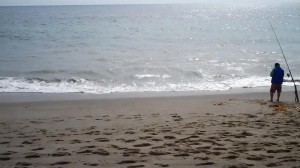 March 24, 2015
March 24, 2015
5:35 pm INT RSSM *DRY TOWEL* PACIFIC OCEAN SAMPLE drawn at Sycamore Canyon Beach at at 3:10 pm March 21: 43.8 CPM^^ (background)
5:20 pm INT RSSM *DRY TOWEL* PACIFIC OCEAN SAMPLE drawn at beach at bottom of Latigo Canyon at 2:30 pm March 21: 39.1 CPM^^ (background)
5:05 pm INT RSSM *DRY TOWEL* PACIFIC OCEAN SAMPLE drawn at Topanga State Beach at 2:00 pm March 21: 37.2 CPM^^ (background)
4:50 pm INT RADIATION STATION SANTA MONICA BACKGROUND (BG): 39.6 CPM^^
March 21, 2015
10:05 pm INT RSSM *WET* PACIFIC OCEAN SAMPLE drawn at Sycamore Canyon Beach at at 3:10 pm earlier in day: 43.2 CPM^^ (background)
9:50 pm INT RSSM *WET* PACIFIC OCEAN SAMPLE drawn at beach at bottom of Latigo Canyon at 2:30 pm earlier in day: 39.7 CPM^^ (background)
9:35 pm INT RSSM *WET* PACIFIC OCEAN SAMPLE drawn at Topanga State Beach at 2:00 pm earlier in day: 42.3 CPM^^ (background)
9:20 pm INT RADIATION STATION SANTA MONICA BACKGROUND (BG): 38.9 CPM^^
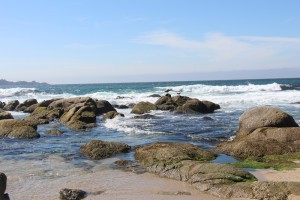 March 8, 2015
March 8, 2015
2:25 pm EXT Carmel River State Beach Pacific Ocean water: 55.3 CPM^
2:10 pm EXT Carmel River State Beach background: 64.7 CPM^^
March 6, 2015
4:20 pm EXT Spooner’s Cove at Montana Del Oro California State Park PACIFIC OCEAN WATER: Background
Readings across the United States were not as encouraging as the results of EnviroReporter.com‘s Spring investigation up the California coast. It is important to remember the following when reviewing our April 7, 2015 report following:
Readings of 100 CPM or more indicate significant beta radiation activity. Three times background readings could mean a hazardous situation exists and protocols discussed and reported on in EnviroReporter.com since March 11, 2011 should be noted. See that below the tilde symbol (~) before some rad readings means mathematically approximate.
April 7, 2015 Nationwide Radiation Report (continued):
Since February 2, 2015 (below in archives), Montgomery AL hit ~205 CPM April 1 but has eased to 55 CPM by April 7; Anchorage AK saw its crucial beta monitoring cease March 24; Fairbanks AK hit ~240 CPM February 15; Phoenix AZ hit a four-month high March 1 with a solid 750 CPM; Tuscon AZ, which nearly topped 380 CPM February 19; Little Rock AR registered ~155 CPM March 16; Fort Smith AR went nuts, beta-wise, and nearly hit 400 CPM twice in the last week; Anaheim CA‘s beta graph shows just ~25 CPM April 7; Fresno CA smashed through previous highs hitting ~970 CPM November 11 and then the graph died December 2 leaving a huge hole in California airborne beta monitoring; Bakersfield CA has gone off the charts – in excess of 1,000 CPM – March 15 but the April 7 reading is a low 100 CPM in comparison; Los Angeles CA‘s beta graph stopped in March 2014 never to return in America’s second largest metropolitan. On the 4-year anniversary of the ongoing triple meltdowns in Fukushima Japan, March 11, RSSMC triple HEPA filter debris test found hot dust coming in at 3.9 times background; Riverside CA‘s graph gave out September 15, 2014; San Bernardino County CA almost hit a four month high of ~340 CPM on April Fools Day which is no joke to anyone breathing that concentration compared to normal levels; San Diego no longer has a working beta graph because it died January 15 after months of erratic fits and starts; Hartford CT was an enviable ~60 CPM April 7; Washington DC registered ~135 CPM February 15-16; still not one beta monitor out of five works in Florida which is amazing; Augusta GA no longer has a working beta graph in a very active environment, unfortunately, giving out August 25, 2014 never to return; Ft. Wayne IN had a malfunctioning beta station from February 5 through March 9 so the latest period’s high is ~155 CPM April 4; Baton Rouge LA was just ~20 CPM April 7; Orono ME is the farthest functioning beta station away from the triple meltdowns at Fukushima Dai-ichi, Japan, and this lovely town has the lowest readings sometimes down into the single digits for days at a time like today with it in the single digits around 9 CPM; Baltimore MD‘s beta and gamma graphs are now ‘on’ and functioning properly with the city hitting~160 CPM on the beta scale which is nothing to be raven about; Worcester MA blew through ~320 CPM September 28 and has spiked three times in November over 200 CPM and then its beta station died December 9 and then briefly be reborn Christmas Day only to die, for good, the next day; Grand Rapids MI got up to ~165 CPM April 1; St. Paul MN was blowing through 300-350 CPM regularly before its beta station died October 16, 2014 not to return in this important upper Midwest center; viroreporter.com/radnet-air-monitoring-data/-data//missouri/#st.louis”>St. Louis tested ~45 CPM April 7; Lincoln NE flirted with ~375 CPM March 21; Concord NH hit ~130 CPM March 8; Albuquerque NM registered ~460 CPM February 24; Buffalo NY tested at ~110 CPM March 26 settling down a bit from the last report period; New York City NY is not functioning as it hasn’t for years but its gamma gross count is sort of jumping around like LA’s gamma is – just one difference, NYC’s gamma is much more active which is one thing New Yorkers can brag about: they’re hotter than Los Angelenos even if the crucial beta station is kaput; Syracuse NY showed ~160 CPM November 26 and then the beta graph died December 1 and never came back plus its gamma station is poorly maintained as evidenced by the scant and inaccurate readings; Charlotte NC topped 220 CPM Christmas Eve bringing with it the gift of a four month high though the graph died January 13 so who knows now; Raleigh NC hit ~170 CPM July 24 and cut out and still hasn’t come back on, a real loss in the South; holy Toledo OH was ~135 CPM March 14; Corvalis OR was ~135 CPM March 15 trending lowerPittsburgh PA was ~160 CPM April 7; Puerto Rico‘s beta graph doesn’t work but the gamma has picked up in the last few weeks; Amarillo TX hit 1,000 CPM several times in the last few months and is one of the hottest sites in the country for reasons not fully understood though we are getting close to some astonishing new answers that will be published soon though we can happily report that the Texas Panhandle hub was just ~30 CPM last night; Dallas TX reached over 305 CPM on the Ides of March, March 15; Ft. Worth hit ~265 CPM February 15; Salt Lake City UT‘s beta station is still down since a huge beta increase over 200 CPM in early May 2014 and remains offline; and Madison WI hit ~170 CPM April 7, 2015 which is considerable but nothing like the highs of the last period for this Midwest center.
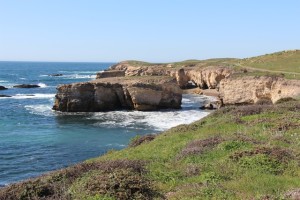
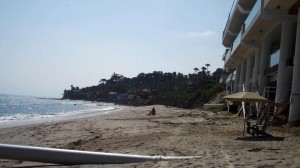
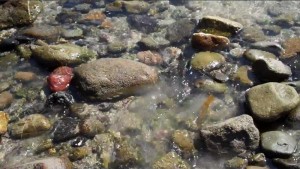













Recent Comments